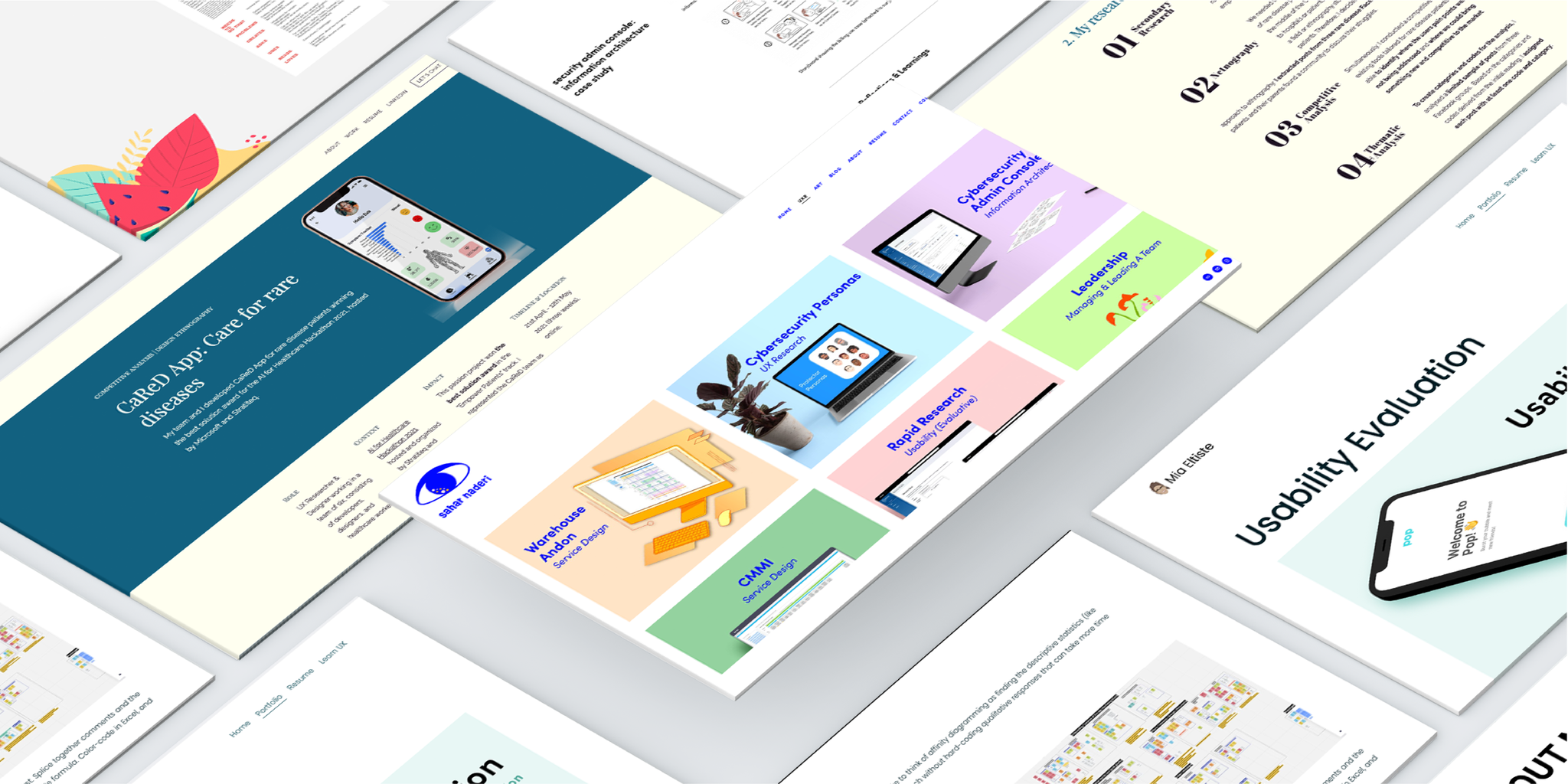Leading a design team can be extremely challenging. You’re navigating the transition from hands-on practitioner to strategic leader, and you’re suddenly responsible for an entire team of people. Daunting!
But it’s also incredibly rewarding. You’ve landed the role because you’re an expert in your field and have the ability to inspire, align, and lead others towards greatness.
Are you ready to ace your new role as a design lead? Then take note of these 8 dos and don’ts:
- DO communicate clearly and transparently
- DO give feedback—and welcome it in return
- DO foster growth and progression
- DO set clear goals and priorities
- DO have effective frameworks and processes in place
- DON’T micromanage
- DON’T strive for perfection
- DON’T stop learning
Before we jump into the dos and don’ts in more detail, let’s first consider what does it actually mean to be a design leader?
What does it mean to be a design leader?
Design leadership isn’t just about managing people. It’s about inspiring and empowering a team of designers to work towards a common goal.
It’s about optimising and streamlining design team processes; advocating for the value and importance of the design team’s work; and ultimately moving the team (and the organisation) towards UX maturity.
Design leaders optimise teamwork and keep everybody aligned. They work collaboratively with their design team to develop and implement frameworks, processes, and best practices that keep everybody moving in the right direction.
They also play a strategic role, tying the design team’s work to the overarching business strategy and objectives.
Design leaders act as coaches and mentors. They evolve into the role because of their own experience and expertise. They help their team members to learn, grow, and advance. They empower them not only with tools and resources, but also with the trust and freedom to make decisions, take risks, and learn from their mistakes.
And, last but not least, they are the biggest advocates for design within the organisation. Design leaders build relationships with other departments and are ready to fight their team’s corner when necessary. With a strong design leader at the helm, the design team can focus on making user-centred decisions and doing their best work.
That’s design leadership in a nutshell. Now let’s explore the 8 most important dos and don’ts of leading a design team.
1. DO communicate clearly and transparently
Communication is one of the most important leadership skills—if not the most important.
According to Grammarly’s 2023 State of Business Communication report, effective communication increases productivity (according to 72% of leaders), noticeably boosts employee confidence (according to 60% of leaders), and decreases leaders’ own stress (according to 41% of leaders).
Poor communication from leadership not only impacts productivity. It also erodes trust, creates a culture of uncertainty, and impacts team morale.
Communicate clearly, transparently, and regularly about the team’s goals, what’s expected of each individual member, the status of different projects, and what’s happening within the wider organisation.
2. DO give feedback—and welcome it in return
You’re a seasoned designer and a respected leader—which means your team likely values your opinion. Make an effort to provide specific and actionable feedback on a regular basis, both on team performance in general and on individual design work.
Positive feedback shows your team that you appreciate them. Constructive feedback allows them to learn and grow. It’s a win-win for everybody!
And, at the same time, welcome and encourage feedback from your team in return. If you’re a first-time design lead, this feedback will prove invaluable in helping you to hone your leadership skills and bring the team together.
3. DO foster growth and progression
As a design lead, you want to keep your team motivated and engaged. It’s therefore crucial to invest in their personal growth and career progression.
Take the time to chat with each team member and learn about their career goals and aspirations—both within the organisation and beyond. Then, work together to devise a pathway for how they can grow within the team and/or the company.
Perhaps you have a junior UX designer who really wants to specialise in UX research. Part of their development pathway could be leading some research projects. Maybe your UI designer is really keen to learn animation, in which case you might encourage them to take an upskilling course.
If you can create space for your team to learn and progress, you’ll not only benefit from high morale. You’ll also benefit from an ever-expanding and highly diverse skill set within the team.
4. DO set clear goals and priorities
Leading a design team is a strategic role. You need to directly connect the work your team is doing to strategic objectives and business impact.
Set clear goals and priorities—and make sure your design team understands the reasons behind them. What broader strategic goal are they serving? Why is the design team working towards X, Y, Z? What’s the impact on the business at large?
This will provide structure and clarity for your team while enabling you to advocate for—and prove—the value of your team’s work.
5. DO have effective frameworks in place
You want to empower your team to do their best work. This means streamlining team processes and having effective frameworks in place.
A design framework is, quite simply, a set of tools, techniques, and steps designers can refer to whenever they start a new project or tackle a new challenge. It provides a systematic, tried-and-tested structure while still leaving plenty of room for adaptation. Design frameworks are a bit like recipes!
Work collaboratively with your team to introduce design frameworks or create your own. You can adapt these frameworks to suit your team’s specific goals and requirements, and replace them if they become redundant or outdated.
You’ll find a guide to some of the most popular UX design frameworks here.
6. DON’T micromanage
Being a design lead requires you to trust your design team to do their jobs. You can guide them, provide feedback, and offer help and support—but do not micromanage.
So how do you know if you’re crossing the line from “helpful leader” to “micromanager”? Some key signs of micromanagement include excessive supervision, closely monitoring your team at all times, making decisions without considering their opinions, checking in too often, and controlling every tiny detail of a project.
It leaves no room for freedom or autonomy, kills creativity, erodes trust, and diminishes people’s confidence. That’s not conducive to fostering a creative, innovative design team!
If you’re new to leadership, bear this in mind and strive to lead in a way that’s supportive but not overbearing.
7. DON’T strive for perfection
Leadership isn’t about perfection or being the best at everything. You may be the most senior member of the design team, but you don’t need to be the resident expert in every single topic or technique. Your role is to coordinate and harness the collective knowledge and expertise of your team.
The best design leaders can recognise how skills and expertise are distributed across the team and bring them together to form a powerful unit. They also know where their own strengths and weaknesses lie—and they’re not afraid to make mistakes or admit when they’re wrong.
Don’t strive for perfection. Instead, focus on building and empowering a strong team made up of individual strengths and talents. And don’t be afraid to fail. This makes it ok for your team to fail, too—creating a culture of psychological safety.
8. DON’T stop learning
The design industry is constantly evolving. From the rise of AI to shifting customer expectations, the emergence of new design roles and job titles, the release of new technologies and tools, and the rise of data-driven design—there’s lots to keep up with.
In your role as design leader, it’s important to keep your finger on the pulse. You want to keep your design team at the cutting-edge and make sure you’re evolving in line with the industry.
At the same time, you want to ensure that you’re personally equipped to navigate new and complex challenges as they arise—and that you’re setting a good example for your team.
The key is to never stop learning. Stay curious, be adaptable, and empower your team to follow suit.
Leading a design team: the takeaway
The best design leaders cultivate trust, transparency, and creative freedom while offering their support through goal-setting, constructive feedback, and empathy. They are respectful and honest communicators, and they know how to harness the strengths of individual players to build a powerful team.
With these 9 dos and don’ts, you can hone your leadership skills and create an environment in which your team will learn, grow, and thrive. For more design leadership insights, check out the first edition of the Journal of UX Leadership, a brand new publication from the UX Design Institute for ambitious UX professionals who want to learn from leaders in the field and grow their careers.




